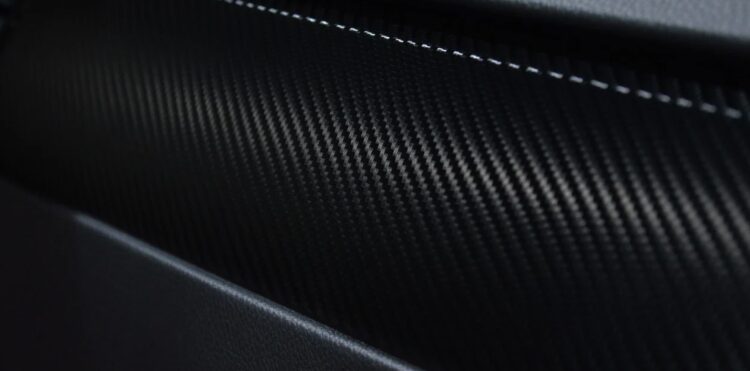Stagnant Wheelchair Industry- Look Beyond and Embrace the Carbon Fiber Wheelchairs
For a long, manufacturers have been equipping automobiles with sensors, cameras, and connections to make them smarter and safer. They soon followed bicycles and scooters. But what about people who use wheelchairs?
Start-ups are fighting for the opportunity to improve the lives of those who have mobility issues by integrating artificial intelligence into wheelchairs. By using computer vision and intelligent braking techniques, it is hoped that this technology would make the gadgets safer and easier to operate. Because a few companies are gaining traction, wheelchairs in the future may perform functions other than simply transportation.
According to David Wong, there are things the industry has accomplished in the previous 24 months that have made wheelchairs more comfortable. He is CEO of JBH Wheelchair, one of the nation's leading manufacturing companies. "Because they're increasingly connected, we'll be able to strengthen these devices into information and data receptors because of their increased connectivity."
A significant reason for the lack of innovation by field companies has been the limited coverage provided by Medicare, Medicaid, and most other insurers for basic equipment needs. According to industry experts, a few multinational corporations that have concentrated on introducing goods in new colors and sizes rather than moving wheelchairs into the digital age likewise dominated the wheelchair manufacturing sector.
What is the Current Status of the Wheelchair Industry in the World?
- There are 131 million people who need wheelchairs in the world.
- The design of mass-market wheelchairs has remained essentially unchanged over the previous four decades.
- Using the most up-to-date digital technology can aid in the improvement of mobility, safety, and accessibility.
- Here are three innovations that are redefining the wheelchair, from digital twinning to smart chairs.
Worldwide, there are around 131 million people who need wheelchairs at any given time. The majority of people are still reliant on technology that has been around for decades. Because, for all that it has accomplished in terms of improving the quality of people's lives, the wheelchair has altered little throughout the last generation.
The digital technologies that are defining the Fourth Industrial Revolution can create significant changes to the overall quality of people's lives as well. Here are three tech-driven setups and entrepreneurs attempting to harness the power of digital change to improve the lives of people who use wheelchairs.
A Birds Eye View of the Wheelchair Industry
New York, New York, July 23, 2020 (GLOBE NEWSWIRE) — (GLOBE NEWSWIRE) — (GLOBE NEWSWIRE) — Global Wheelchairs (Powered and Manual) Industry, a new study from Reportlinker.com, is available for purchase. Six billion by 2027, rising at a compound annual growth rate (CAGR) of 6.7 percent over the analysis period 2020-2027. Hand-operated wheelchairs, one of the segments examined in the report, are expected to increase at a compound annual growth rate (CAGR) of 7 percent, reaching US$4.2 billion by the conclusion of the study period. Following an early assessment of the commercial ramifications of the pandemic and the resulting economic crisis. The growth forecast for the Mobility Scooters segment has been reduced to a revised 5.6 percent compound annual growth rate (CAGR) for the following seven years. This sector holds a 29.5 percent share of the global Wheelchairs (Powered and Manual) market at the time of this report's publication.
The United States is expected to account for more than 27.1 percent of the global market size in 2020, while China is expected to grow at 10.2 percent between 2020 and 2027.
It is anticipated that the market for wheelchairs (both powered and manual) in the United States will reach US$1.7 billion by 2020. The country has a 27.05 percent share of the global market at the time of writing this article. With a projected market size of US$2.1 billion in 2027, China, the world's second-largest economy, is expected to grow at a compound annual growth rate (CAGR) of 10.2 percent from now until the end of the decade. Among the other notable geographic markets are Japan and Canada, which are expected to increase at rates of 3.6 percent and 6 percent, respectively, over 2020-2027, according to the forecast. Germany is expected to expand at a compound annual growth rate (CAGR) of around 4.3 percent, while the rest of Europe (as defined in the study) will reach US$2.1 billion by the year 2027.
Powered Wheelchairs Segment Corners a 28% Share in 2020
The United States, Canada, Japan, China, and Europe will be the primary drivers of the 6.6 percent compound annual growth rate (CAGR) predicted for the global Powered Wheelchairs segment. Currently, these regional markets have a combined market size of US$1.3 billion in the year 2020. However, by the end of the analysis period, the combined market size is expected to reach US$2 billion in the year 2020. China will continue to be one of the fastest-growing markets in this group of regional markets. The market in Asia-Pacific, led by nations such as Australia, India, and South Korea, is expected to reach US$1.3 billion by the year 2027. While the market in Latin America is expected to grow at a compound annual growth rate (CAGR) of 8.5 percent during the study period. This 16th edition of our study is the culmination of years of research experience on our part. The 261-page paper provides brief insights into how the pandemic has impacted production and the purchase side for 2020 and 2021, as well as recommendations for action. It is also proposed to implement a short-term staged recovery by a crucial geographic area. The competitors identified in this market include, among others,
- 21st Century Scientific Inc.
- Etac AB
- Future Mobility Products
- Convaid Products, LLC.
- GF Health Products, Inc.
- JBH Wheelchair
- Invacare Corporation
- Karma Mobility
- Karman Healthcare Services, Inc.
- Karma Medical Products Co., Ltd.
- Pride Mobility Products Corporation
- Permobil, Inc.
- Matsunaga Manufactory Co., Ltd.
- Magic Mobility Pty. Ltd.
- LEVO AG
- MEYRA GmbH & Co.
- Otto Bock HealthCare GmbH
- Medline Industries, Inc.
- Pihsiang Machinery MFG. Co. Ltd.
How is the Carbon Fiber Wheelchair Revolutionizing the Industry?
It is a Self-driving Wheelchair
Guru IoT is a South Korean company that, as its name suggests, specializes in the Internet of Things. A self-driving wheelchair has been developed, which makes use of the digital twinning principle. The wheelchair has accessibility to a detailed map kept on a cloud computing system, which it uses to find its way around safely. This approach is inexpensive than the other, which involves outfitting the device with internet-connected sensors that send and receive data in real-time.
A digital twin map instead of future technologies that depend on global location data means that even with the additional safety features like proximity sensors, the chair might be cheap enough to be offered to the general public.
To demonstrate that robotics and people can work well together, our self-driving wheelchair is the gold standard, according to Guru IoT president Song Su-Han," said Song Su-Han.
It is an Accessible Accessory
As a newbie, Luci hasn't done anything yet. Existing motorized wheelchairs will be able to become smart chairs with the addition of Luci.
In order to direct and avoid obstacles, Luci, a US-developed and produced wheelchair, will be equipped with a frame comprising eight sensors. Jered Dean, Luci's co-founder, describes them as "understated but utilitarian". He claims they employ ultrasonic waves, infrared, and cameras to perform things like appropriately slowing down the chair to avoid accidents.
This chair's development team was particularly concerned about the safety of its users. To address this concern, the team used wheelchairs in a series of impact tests to measure the severity of harm caused by various sorts of collisions and mishaps. They also found that 87% of those who use motorized wheelchairs have fallen or tipped over in the last three years.
According to a remark on the Luci website, "the world is both magnificent and scary." According to the authors, "we believe that electric wheelchairs should both beautify the surroundings and make it safer for those who use them."
It is a Smart 3D Printing Wheelchair
The Phoenix I chair was designed to keep users from falling and getting hurt when their chairs tip over. Andrew Slorance, a Scottish designer and businessman, won Toyota's Mobility Unlimited Challenge, a global design competition.
Slorance told the BBC of an accident he suffered in the early 1980s that rendered him wheelchair-dependent. After that, he claims, "in wheelchairs, nothing important happened." "They've gotten smaller or smaller, but tech hasn't evolved all that much in the last 40 years."
The creator claims that his design, which utilizes 3D-printed carbon fiber, is incredibly light. If 'intelligent mode' is selected, the bike's chassis and wheels move in unison with the rider's every move. In addition to boosting the chair's agility, it also improves its stability.
Carbon Fiber Technology in Wheelchair: At a Glance
A Brief History
Carbon fiber was discovered for the first time in 1958 by Roger Bacon of Ohio. Using a method developed by Leslie Phillips, an engineer from the United Kingdom, in 1964, it was possible to achieve the high potential strength of carbon fiber. Carbon fiber has been utilized commercially for the past 50 years, primarily in the construction of high-end sporting goods and automobiles, among other applications. According to the National Academy of Engineering, one of the twenty most significant engineering accomplishments of the twentieth century has been composite materials, which include carbon fiber.
What is a Composite Material?
It is possible to create composite materials by combining two or more elements in form or composition but retain their identities. The National Academy of Engineering is a non-profit organization that promotes engineering excellence.
What is Carbon Fiber?
Carbon fibers are smaller than a human hair in diameter and are composed primarily of carbon atoms. Several thousand filaments are packed together and used individually or woven together to form a fabric. In combining carbon fiber cloth with a matrix of plastic resin, a composite is formed. Carbon fiber is a solid and lightweight composite material extensively utilized in the construction of cars, sporting goods, and Motion Composite wheelchairs, among other applications.
What are the Properties of Carbon Fiber?
High Specific Strength
Specific strength is also referred to as the strength-to-weight ratio or the strength-to-weight ratio of the material. A material's strength (the force per unit area at failure) is found by dividing the material's density by the material's strength. When compared to metals, carbon fiber possesses an astonishingly high specific strength.
Clinical Connection
A wheelchair constructed of carbon fiber will be as robust or more substantial than a wheelchair composed of titanium or aluminum while simultaneously weighing less than a wheelchair constructed of titanium or aluminum. You can achieve upper limb function preservation by using wheelchairs built of the lightweight material available, according to clinical research backed up by experience. According to a 2002 study, older persons who do not use their manual wheelchair cite chair weight as the top cause for their non-usage.
According to some reports, a lightweight chair is also simpler to move around the room. The most significant advantage of using a lightweight wheelchair is that it will be easier to lift and move around. It is especially crucial for users who must lift the chair into and out of the car, up and down the stairs, or traveling with the chair.
Exceptional Durability
When compared to metals, carbon fiber exhibits superior fatigue resistance. It means that components constructed of carbon fiber will withstand the repetitive stress of daily use for a more extended period. On the NSI/RESNA* fatigue strength test of durability, Motion Composites' carbon fiber wheelchairs lasted twice as many cycles as the minimum requirement.
Clinical Connection
Durability offers a more dependable and safer wheelchair requiring less maintenance and higher overall cost-effectiveness over the chair's service life. For both the end-user and the funding organizations, this is critical information.
Chairs with greater durability and safety have a lower probability of being left unused. In a 1993 study that looked at determinants of assistive technology abandonment, it was discovered that wheelchair users had a 39 percent abandonment rate. According to Phillips ' research, the study revealed that customers who believed their devices weren't performing well were more likely to quit them. Safety and durability were among the factors identified as impacting performance.
Corrosion Resistance
Aluminized carbon fiber is one of the most corrosion-resistant materials now available on the market.
Clinical Connection
Wheelchairs constructed of a corrosion-resistant material will be long-lasting and cost-effective in the long run.
Some Myths About Carbon Fiber Technology
Myth 01 – Underperforms When Exposed to Cold Temperatures
When it comes to aircraft and satellites, carbon fiber components are employed widely, and they are subjected to extreme temperatures ranging from superheated to near absolute zero. Carbon fiber's low thermal expansion qualities make it an excellent choice for applications involving extreme temperature changes.
Myth 02 – Cracks or Chips in The Surface Easily
During the previous decade, carbon fiber technology has seen significant advancement. It is now being utilized in high-impact applications such as baseball bats, among other things.
Myth 03 – Catastrophic Destruction
A reputation for catastrophic destruction that renders the device unusable has developed for other carbon fiber wheelchairs and recreational items (bikes, hockey sticks, and so on). The design of a carbon fiber component determines the strength of the component.
Given that a layer of carbon fiber is only strong in one direction, some carbon fiber goods (for example, hockey sticks) are engineered to flex and are more susceptible to breakage than others. Depending on how the carbon fiber is laid and aligned throughout the manufacturing process, it is possible to obtain remarkable strength in torsion, compression, and flexion. Over three years, the Motion Composites design team sought to identify the optimal fiber alignment for longevity, lightweight, and propulsion efficiency.
Bottom Line!
The bottom line is carbon fiber is a thing for the future. It has already revolutionized the wheelchair industry with unique features such as durability, enhanced functionality, and much. Therefore, trust in the pure handmade carbon fiber wheelchair and make your life comfortable.






Why are you not making a carbon fiber folding wheelchair with 12 inch back tires for real off road use. Yes I have a Motion Composite carbon fiber chair, “Veloce”.